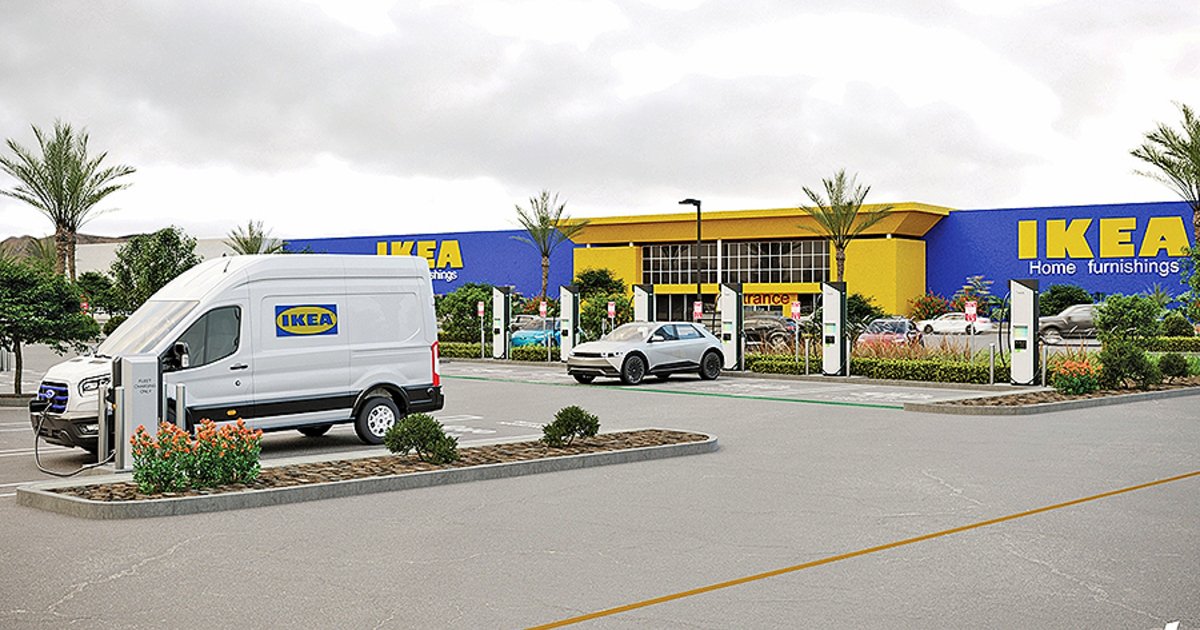
Electric vehicle owners are turning to retail chains to play the role gasoline stations have long fulfilled for drivers — a place to recharge the car and the body.
Both Starbucks and Ikea recently announced deals with charging networks to install banks of chargers. They are looking to attract customers who need something to do while their vehicles recharge.
“Get a little coffee, hang out, listen to music,” said Gary Silberg, KPMG’s global automotive sector leader. “If you can charge your car at the same time, why not?”
Tesla pioneered the trend by locating much of its proprietary Supercharger network near chain restaurants and retail centers. But as the number of EV owners from other brands grows, drivers are looking for charging stations that work with their vehicles.
Charging infrastructure is among the most significant issues facing the burgeoning EV sector, a pair of studies from J.D. Power and CDK Global Inc. recently found. Not only are charging stations hard to find, many have slow charging speeds or are broken.
The CDK study found that 60 percent of respondents reported concerns about charging network availability being an obstacle to purchasing an EV. J.D. Power found that 20 percent of EV owner respondents couldn’t charge their vehicle when visiting a station — mainly due to malfunctioning chargers.
Installing chargers at easy-to-reach, popular chain businesses is one industry solution to the lack of availability.
Starbucks announced in March a partnership with Volvo to build 60 fast chargers at 15 stores from Denver to Seattle by the end of the year.
Essentially, the project turns Starbucks stores into the EV equivalent of gasoline stations along the 1,350-mile route. Each location will be no farther than 100 miles apart, and the ChargePoint DC fast chargers can charge many of the latest EVs up to 80 percent in about 30 minutes.
The project is about making EV charging “as easy as getting a great cup of coffee,” said Michael Kobori, Starbucks’ chief sustainability officer.
Ikea is following a similar path with a recent partnership with the Electrify America charging network. The home furnishings chain said it would install fast chargers at 25 stores across 18 states.
Electrify America has a significant presence in the parking lots of Target and Walmart nationally, with more than 100 locations for each business providing charging for EV drivers. While Starbucks focused on customer convenience, Ikea CEO Javier Quiñones said climate change is another big factor.
“This collaboration with Electrify America will not only bring ultrafast public chargers to our stores for the first time, but it will also help us take a big leap as we work toward our targets to become circular and climate positive,” Quiñones said.
Automakers and businesses involved in these projects say they’re game- changers for the EV market and the environment.
Electric vehicle owners want something to do while their car charges, said Brent Gruber, J.D. Power’s executive director of global automotive.
Although charging times are coming down with technology advances, none compare with the speed of fueling a conventional vehicle with gasoline.
“And no matter how fast their vehicle charges, EV owners still indicate they need more options for things to do during each charging session to enhance convenience and fill the downtime,” Gruber said.
Silberg, however, said there are limits to the trend. Locations in cities, for example, might not have the parking space to accommodate significant numbers of charging stations.
Silberg said he also questions the level of the stations’ profitability for the businesses that host them. They might not generate much in sales for the retailers.
“I’m not sure it’s a moneymaker,” Silberg said.